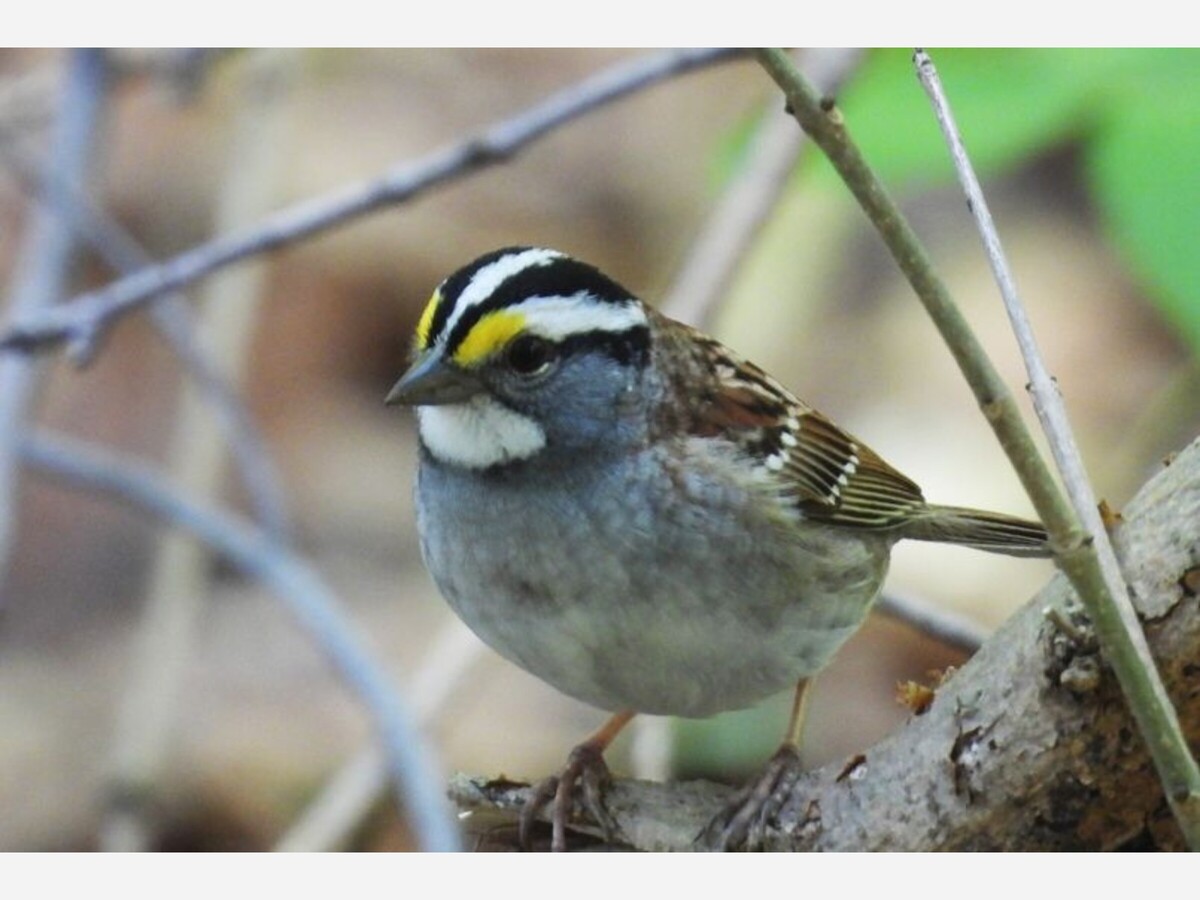Image

by Mike Strzelecki*
Pennsylvania has over 25 species of sparrows that breed, reside, or pass through the state. Sparrows of different species often look alike, to the untrained eye. They are typically about the same size, and have some variation of brown, tan, and black markings. They are at times overlooked by bird watchers, since they lack the vibrancy and bright colors of other birds.
One species of sparrow is worth noting, as it has a beautiful facial pattern and rhapsodic song. It is a species that is abundant in the Boyertown area and can often see on or around backyard feeders. The species is the white-throated sparrow.

The white-throated sparrow has a body similar to other species of sparrows, but announces its presence with a very colorful and unique facial pattern. It has black and white stripes running lengthwise along the top of the head, yellow “lores” over the eyes, and a large white throat marking. It’s a beautiful bird that can often be seen close-up in backyards.
White-throated sparrows are migratory birds, and the good news for local backyard birders is that they are moving into the area right now. They breed in spring and summer in upper New England and Canada, but spend winters in the lower eastern United States, from about New York and south. They are abundant in Pennsylvania.

White-throated sparrows tend to show themselves readily to humans, making them fun to watch while on birding trips. But they also readily show their hand with their piercing and melodic song. From November through spring, listen for this call in backyards and in neighborhood parks, as well as woodlands:
https://www.allaboutbirds.org/guide/White-throated_Sparrow/sounds
White-throated sparrows generally eat seeds, insects, and berries. They can sometimes be seen kicking leaves around to get to the goods underneath. They have a taste for millet and sunflower seeds, and as such, readily come to bird feeders. While I occasionally see them on the feeder itself, I more typically see them bouncing around the grass beneath the feeders, feasting on the leftovers that the squirrels and starlings discard. If you want to attract white-thoated sparrows to your backyard, the best method is to establish a pile of loose branches near your feeder, where they can hide from predators between meals. We have a hydrangea beside our bird feeder and it’s loaded with white-throated sparrows over the winter months.
In the Boyertown area, the most common feeder birds in winter are cardinals, song sparrows, dark-eyed juncos, Carolina chickadees, and white-throated sparrows. One highly unusual behavioral trait of the white-throated sparrow is that it will breed at times with dark-eyed juncos, a rare case of one bird species breeding with another. The resulting offspring typically appears like the pure-bred white-throated sparrow but with a grayer tone and whiter outer tail feathers, from the dark-eyed junco. Here is a picture of such a hybrid:

On a sadder note, white-throated sparrows are considered the bird most prone to window strikes resulting in deaths. They tend to be attracted to the light inside of buildings. One study found that between 1996 and 2014, the white-throated sparrow population declined by 63 percent in the United States. Much of this decline is attributed to window strike deaths, as well as habitat loss and pesticides.
*Mike Strzelecki is a freelance travel and outdoor writer, and 1981 graduate of Boyertown Area Senior High School. He writes from his house in Baltimore, Maryland. In his spare time, he joins his wife on adventures around the country observing and photographing birds.